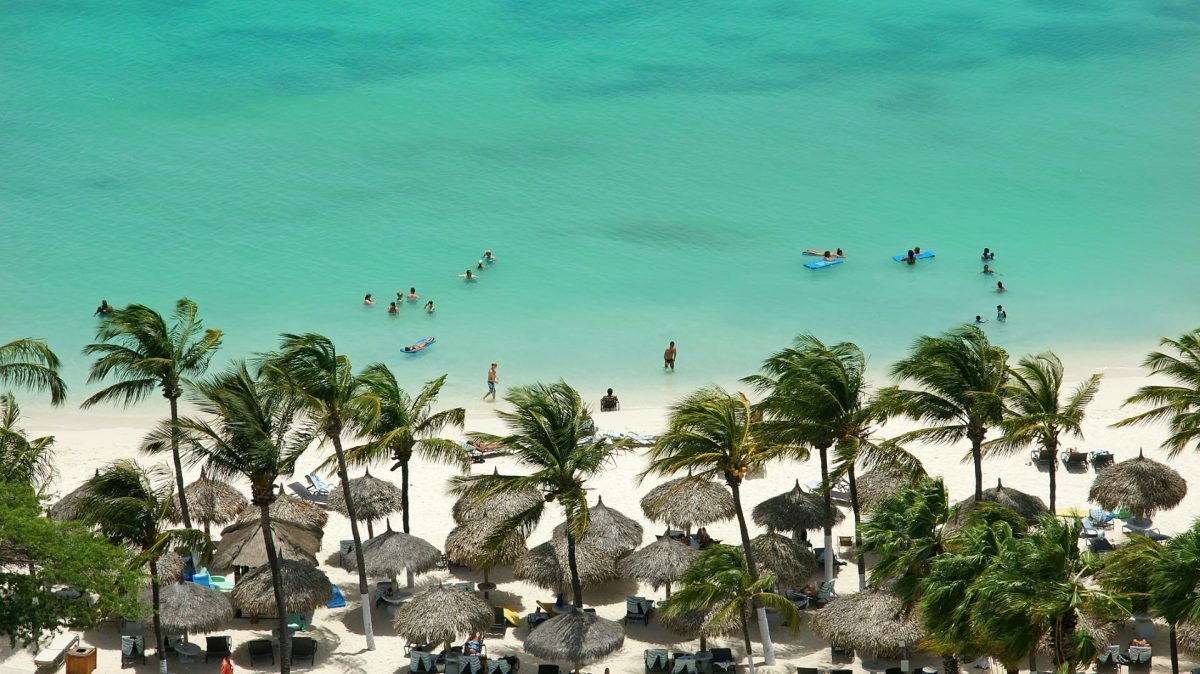How to Experience Marble Mountain and Monkey Mountain Tour in Hoi An
If you want to make the most of your visit to Hoi An, consider taking the Marble Mountain and Monkey Mountain tour. This half-day tour will take you to two of the most popular mountains in the area and provide you with an opportunity to explore 19th-century Buddhist pagodas and caves, visit a traditional marble carving village, and learn about the history of Monkey Mountain from a knowledgeable guide. Here is what you can expect from this tour:Overview
Your tour guide will meet you at your hotel in Hoi An between 8:15 AM and 8:30 AM. From there, you’ll head to Marble Mountain, a limestone mountain range that features stunning caves, grottoes, and Buddhist shrines. You’ll spend a few hours exploring Marble Mountain’s 19th-century Buddhist pagodas, including the Huyen Khong Cave, Tang Chon Cave, and Linh Ung Pagoda. Next, you’ll head to a traditional marble carving village located at the foot of Marble Mountain. Here, you can watch craftsmen carve intricate sculptures and learn about the history of marble carving in Vietnam. Afterward, you’ll head to Monkey Mountain, where your guide will offer insights into the mountain’s historic significance.What’s Included
This tour includes mineral water, entrance fees, and transportation. However, personal expenses are not included in the tour price. Round-trip transport from Hoi An to Da Nang is available for an added fee.Meeting and Pickup
The car and tour guide will pick you up at your hotel in Hoi An between 8:15 AM and 8:30 AM. If you require pickup and dropoff at your hotel in Da Nang, there is a surcharge of $17 USD for a 4-seater car.What to Expect
During this half-day tour, you’ll explore two of the most interesting mountains in Hoi An. Marble Mountain features magnificent limestone formations, caves, and stunning views of the surrounding area. You’ll be able to explore 19th-century Buddhist pagodas nestled in the caves, each with its own fascinating history. At the marble carving village, you’ll witness the ancient art of marble carving and observe how skilled artisans turn rough blocks of stone into beautiful sculptures. The best thing about the village is that you can purchase unique souvenirs to take home with you. On Monkey Mountain, you’ll learn about its historical significance and stunning views of surrounding areas. As the mountain is situated on the Son Tra Peninsula, you’ll be able to take in the beauty of the peninsula too.Book Your Tour Now
Overall, the Marble Mountain and Monkey Mountain tour is a unique and enjoyable experience that should not be missed. The tour is perfect for history lovers, adventure enthusiasts, and anyone looking to discover the beauty of Vietnam. Don’t forget to book your tour here and enjoy the full experience of what Hoi An has to offer.
Frequently Asked Questions About Hoi An
Are you planning a trip to Hoi An? Do you have any questions about this beautiful city in Vietnam? In this post, we’ll answer some of the most frequently asked questions about Hoi An to help you plan your trip.1. What is Hoi An?
Hoi An is a small city located in the central coast of Vietnam. The city is known for its well-preserved ancient town, which is a UNESCO World Heritage Site and attracts thousands of tourists every year. Hoi An has a rich cultural heritage, with influences from Chinese, Japanese, and European cultures.2. When is the best time to visit Hoi An?
The best time to visit Hoi An is from February to May when the weather is mild and dry. Avoid visiting Hoi An during the summer months (June to August) when the weather is hot and humid, and the city is crowded with tourists. The rainy season (September to January) should also be avoided as typhoons can hit the area.3. What are the top tourist attractions in Hoi An?
Hoi An has many tourist attractions, including:- Ancient town
- Japanese Covered Bridge
- Assembly Hall of the Fujian Chinese Congregation
- Hoi An Museum
- Thanh Ha Pottery Village
- Tra Que Vegetable Village
4. What is the best way to get around in Hoi An?
The best way to get around Hoi An is on foot or by bicycle. The ancient town is pedestrianized, so you cannot drive there. You can rent a bicycle from many shops around the city, and it’s a fun and cheap way to explore the area. Taxis and motorbikes are also available for hire if you want to go further afield.5. What is the local cuisine in Hoi An?
Hoi An is famous for its cuisine, which is a fusion of Vietnamese, Chinese, and Japanese influences. Some of the must-try dishes include Cao Lau (noodles with pork and herbs), Banh Mi (Vietnamese baguette), White Rose (shrimp dumplings), and Mi Quang (noodles with peanuts and herbs). You can find these dishes at local restaurants or street vendors.6. Is Hoi An safe?
Hoi An is generally safe for tourists. However, like any other tourist destination, you should take precautions to avoid theft and scams. Keep your valuables safe, be cautious when using ATMs, and avoid walking alone at night.7. What should I wear when visiting Hoi An?
Hoi An is a humid city, so it’s recommended to wear breathable and lightweight clothing. As Hoi An is a conservative city, it’s respectful to cover your shoulders and knees when visiting temples or other religious sites.8. Can I use credit cards in Hoi An?
Credit cards are accepted at most hotels and restaurants in Hoi An. However, it’s always a good idea to have some cash on hand, especially when visiting street markets or small shops.9. What souvenirs can I buy in Hoi An?
Hoi An is famous for its silk lanterns, which make a great souvenir. You can also find handmade ceramics, silk clothing, and local crafts at the many artisan shops around the city.10. What is the currency used in Hoi An?
The currency used in Hoi An is Vietnamese Dong (VND). US dollars are also accepted at some establishments, but it’s recommended to have the local currency on hand for small transactions. We hope this FAQ has answered some of your questions about Hoi An. Enjoy your trip to this beautiful city!
How to Spend Your Time as a Tourist in Hoi An
For those looking to explore the charming city of Hoi An, there’s plenty to see and do. From historical landmarks to delicious cuisine and the famous lantern festival, there’s something for everyone. Here’s a guide on how to make the most of your time in Hoi An.1. Explore the Ancient Town
Hoi An’s Ancient Town is a UNESCO World Heritage Site and is home to numerous historical landmarks, including old shop houses, Chinese temples, and Japanese merchant houses. A walking tour through the town is a great way to immerse in the history and culture of the area. With a small entrance fee of 120,000 VND, you can enjoy the town’s beauty at any time of day.2. Visit the Japanese Covered Bridge
The Japanese Covered Bridge is one of Hoi An’s most iconic landmarks. Spanning across a small canal, this bridge is a symbol of the town’s history and was built to connect the Japanese and Chinese quarters of Hoi An. The bridge is beautifully decorated with intricate carvings and is an excellent location for photos.3. Take a Cooking Class
Hoi An is renowned for its delicious cuisine. A cooking class is an excellent way to learn about the local ingredients and techniques used in Vietnamese cuisine. Joining a cooking class, you’ll get to visit a local market and learn all the secrets to make dishes like Pho and Banh Xeo.4. Cycle to the Countryside
Take a break from the historic landmarks and explore Hoi An’s countryside on a bike. It is a refreshing change of pace that offers a glimpse of the rural Vietnamese way of life. Bike rentals are plentiful and cheap, so you can go with a guided tour or explore the area yourself.5. Attend the Lantern Festival
The full moon festival is the highlight of Hoi An’s calendar year. Taking place on the 14th day of the lunar calendar, the streets of the town are illuminated with thousands of colorful lanterns. The festival includes traditional games, food stalls, and music which make for an unforgettable night.6. Visit the Local Tailors
Hoi An is also famous for its tailor shops. Visitors can buy tailor-made clothing at a fraction of the cost of what they may pay back home. The shop owners can create excellent quality clothing that is tailored to your exact specifications. Make sure to research a few shops in advance and be clear on what you want.7. Unwind on An Bang Beach
Once you’re done exploring the city, a visit to An Bang Beach can be a refreshing break. Just 10 km from Hoi An, this clean and peaceful beach with its turquois water is an excellent place to relax and soak up the sun.8. Take a Boat Ride
A boat ride along the Thu Bon River is a great way to experience Hoi An from a different perspective. It’s worthwhile to take a private boat tour to appreciate the elegant bamboo bridges, rice paddies, and stilted houses along the waterway.9. Experience a Traditional Vietnamese Puppet Show
The artform of water puppetry has been practiced in Vietnam for over 1000 years. Attend a live performance of the artform in Hoi An and watch the legends and stories of Vietnam come alive through art and music.10. Visit Cham Island
A visit to Cham Island is an excellent way to escape the crowds and noise of Hoi An’s city center. A short boat ride away, this island is a paradise for snorkeling, swimming, and sunbathing. With clear, blue water and white sand beaches, the location is perfect for those seeking a day-trip to rejuvenate themselves.Book Your Tour Now
Hoi An has something to offer everyone, from its historic landmarks to its serene beaches. Make sure to explore the city’s charm and beauty when planning your trip to Vietnam. Plan ahead and make the most of your time in this unique and unforgettable location.Table of Contents

